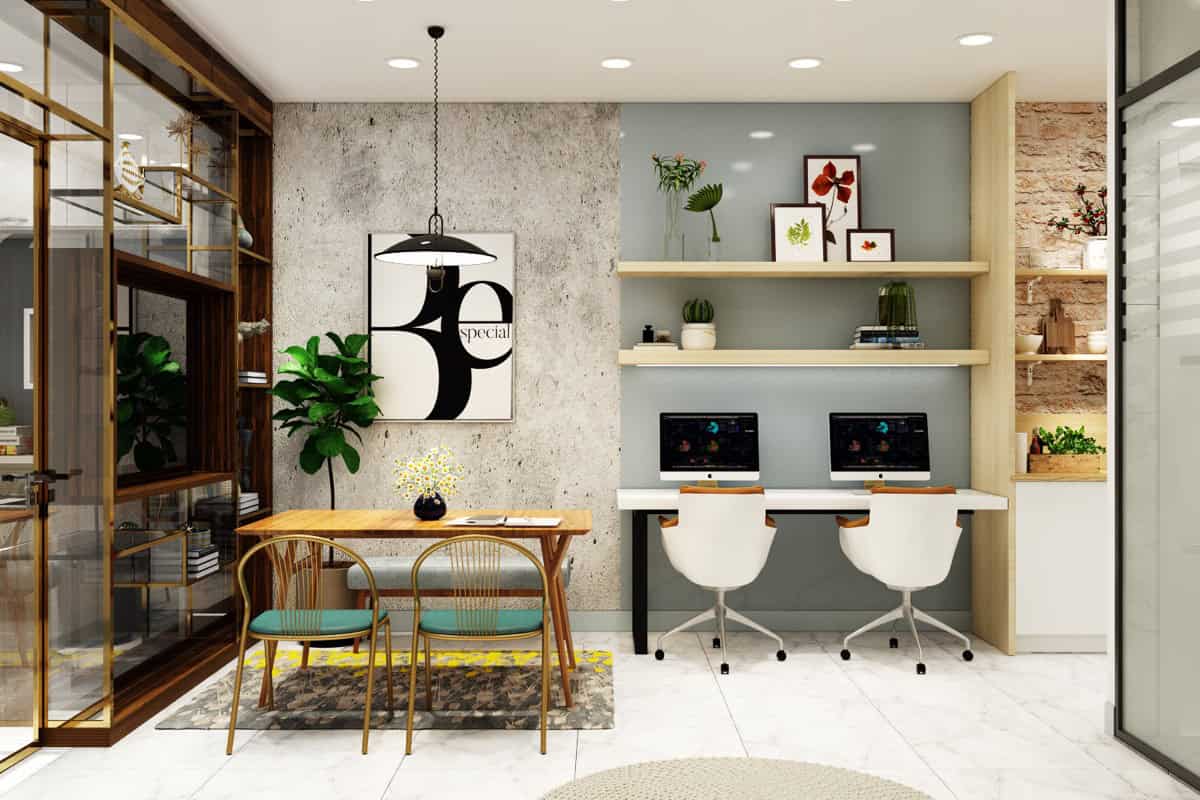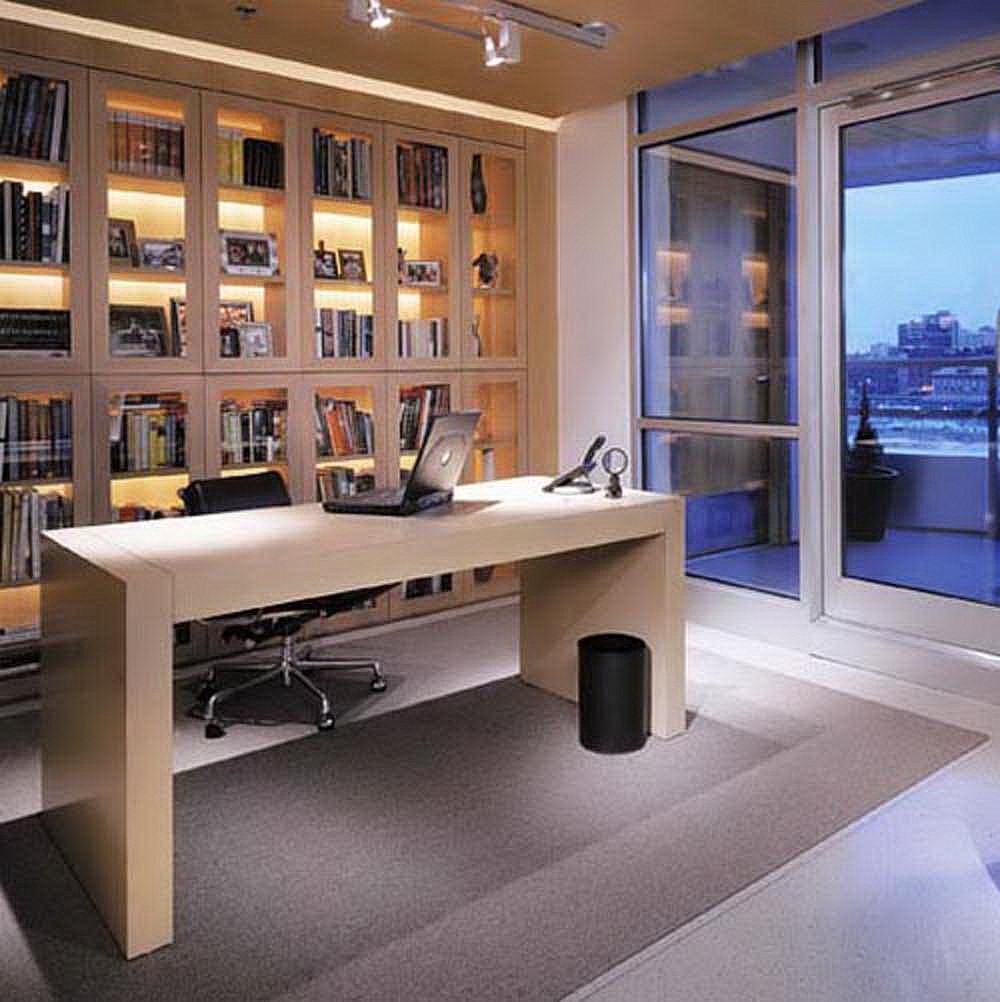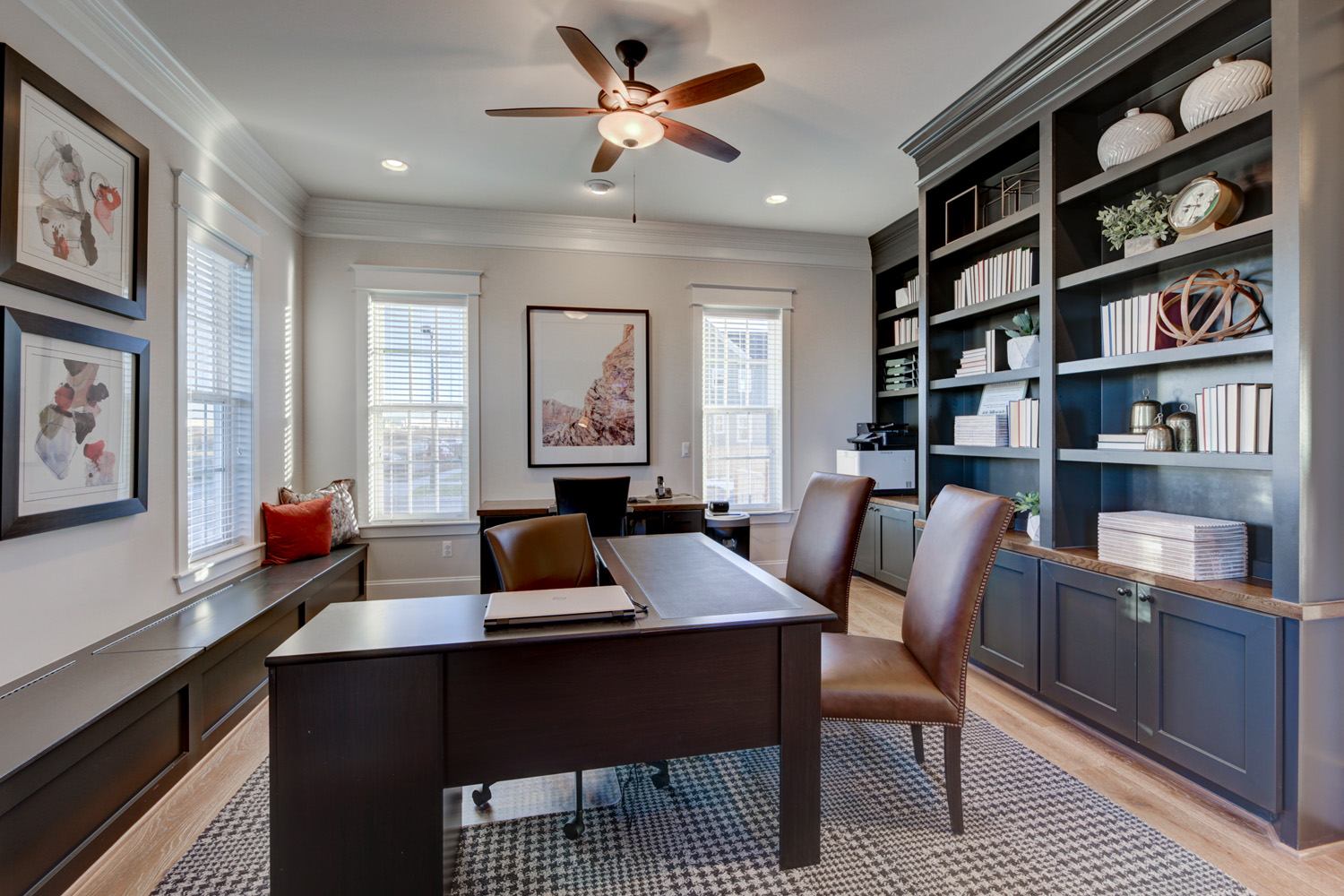interior design for home office
Home offices have become increasingly popular in recent years, as more and more people work from home. This trend is likely to continue, as the COVID-19 pandemic has forced many people to work from home indefinitely. If you're planning to set up a home office, it's important to make sure that the space is designed in a way that is both functional and comfortable.
In this article, we will discuss the key elements of home office interior design, and provide tips on how to create a space that is both productive and inspiring.
1. Choose the Right Location
The first step in designing your home office is to choose the right location. The ideal home office should be in a quiet, private space where you can focus on your work. If you have a spare bedroom, this can often make a great home office. If you don't have a spare bedroom, you may need to get creative and find another space in your home that can be converted into an office. Some possibilities include:
- A corner of your living room
- A spare closet
- A nook under the stairs
- A shed or garage
Once you've chosen a location, it's time to start thinking about the design.
2. Consider the Layout
The layout of your home office is important for both functionality and comfort. You want to make sure that you have enough space to work comfortably, but you also don't want the space to feel cluttered.
A good rule of thumb is to create a dedicated workspace for yourself. This could be a desk or table, or even just a comfortable chair where you can sit and work. You should also have enough space for your computer, printer, and other essential office supplies.
If possible, try to arrange your workspace so that you have natural light. This will help to make the space feel more inviting and productive.
3. Choose the Right Furniture

The furniture you choose for your home office is important for both comfort and style. You want to make sure that you have furniture that is comfortable to sit in for long periods of time, but you also want furniture that looks good in your space.
Some of the essential pieces of furniture for a home office include:
- A desk or table
- A chair
- A filing cabinet or storage unit
- A lamp
- A bookshelf or bookcase

You may also want to consider adding some other pieces of furniture, such as a comfortable couch or armchair, if you plan on using your home office for relaxing or entertaining guests.
When choosing furniture for your home office, it's important to keep the following factors in mind:
- Comfort: The furniture you choose should be comfortable to sit in for long periods of time.
- Style: The furniture should look good in your space and reflect your personal style.
- Functionality: The furniture should be functional and meet your needs.

4. Add Personal Touches
One of the best ways to make your home office feel more personal is to add some personal touches. This could include things like photos of your family and friends, plants, or your favorite pieces of art.
Personal touches can help to make your home office feel more like a space that you enjoy spending time in. They can also help to create a more productive and inspiring work environment.

5. Consider the Lighting
The lighting in your home office is important for both comfort and productivity. You want to make sure that you have enough light to work comfortably, but you also don't want the light to be too harsh.
A good rule of thumb is to have a mix of natural and artificial light. Natural light is best, but if you don't have a lot of natural light in your home office, you can supplement it with artificial light.

When choosing lighting for your home office, it's important to keep the following factors in mind:
- Brightness: The light should be bright enough to work comfortably, but not so bright that it's harsh.
- Direction: The light should be directed at your workspace so that you can see what you're doing.
- Color: The color of the light can affect your mood and productivity.
6. Add Soundproofing

If you live in a noisy area, it's important to add soundproofing to your home office. This can help to create a more peaceful and productive work environment.
There are a few different ways to add soundproofing to your home office. You can use soundproofing curtains, acoustic panels, or even rugs.
When choosing soundproofing materials, it's important to keep the following factors in mind:

- Thickness: The thicker the material, the better it will block sound.
- Density: The denser the material, the better it will block sound. *
Thank you for exploring our website by interior design for home office. Your presence fuels our commitment to excellence. Come back for a more enriching experience!

